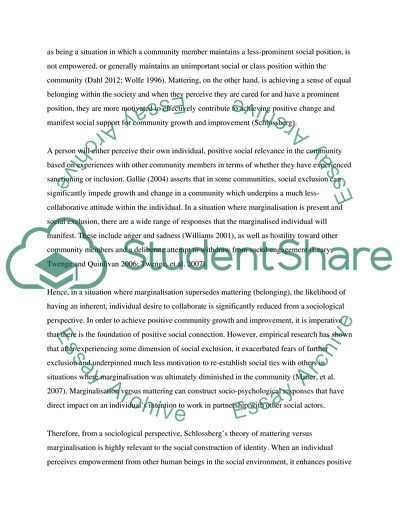Cite this document
(Linking Social Identity with Community Development Theory Essay, n.d.)
Linking Social Identity with Community Development Theory Essay. Retrieved from https://studentshare.org/social-science/1880950-the-social-construction-of-identity-is-a-sociological-theory-that-is-relevant-to-community-development
Linking Social Identity with Community Development Theory Essay. Retrieved from https://studentshare.org/social-science/1880950-the-social-construction-of-identity-is-a-sociological-theory-that-is-relevant-to-community-development
(Linking Social Identity With Community Development Theory Essay)
Linking Social Identity With Community Development Theory Essay. https://studentshare.org/social-science/1880950-the-social-construction-of-identity-is-a-sociological-theory-that-is-relevant-to-community-development.
Linking Social Identity With Community Development Theory Essay. https://studentshare.org/social-science/1880950-the-social-construction-of-identity-is-a-sociological-theory-that-is-relevant-to-community-development.
“Linking Social Identity With Community Development Theory Essay”, n.d. https://studentshare.org/social-science/1880950-the-social-construction-of-identity-is-a-sociological-theory-that-is-relevant-to-community-development.


